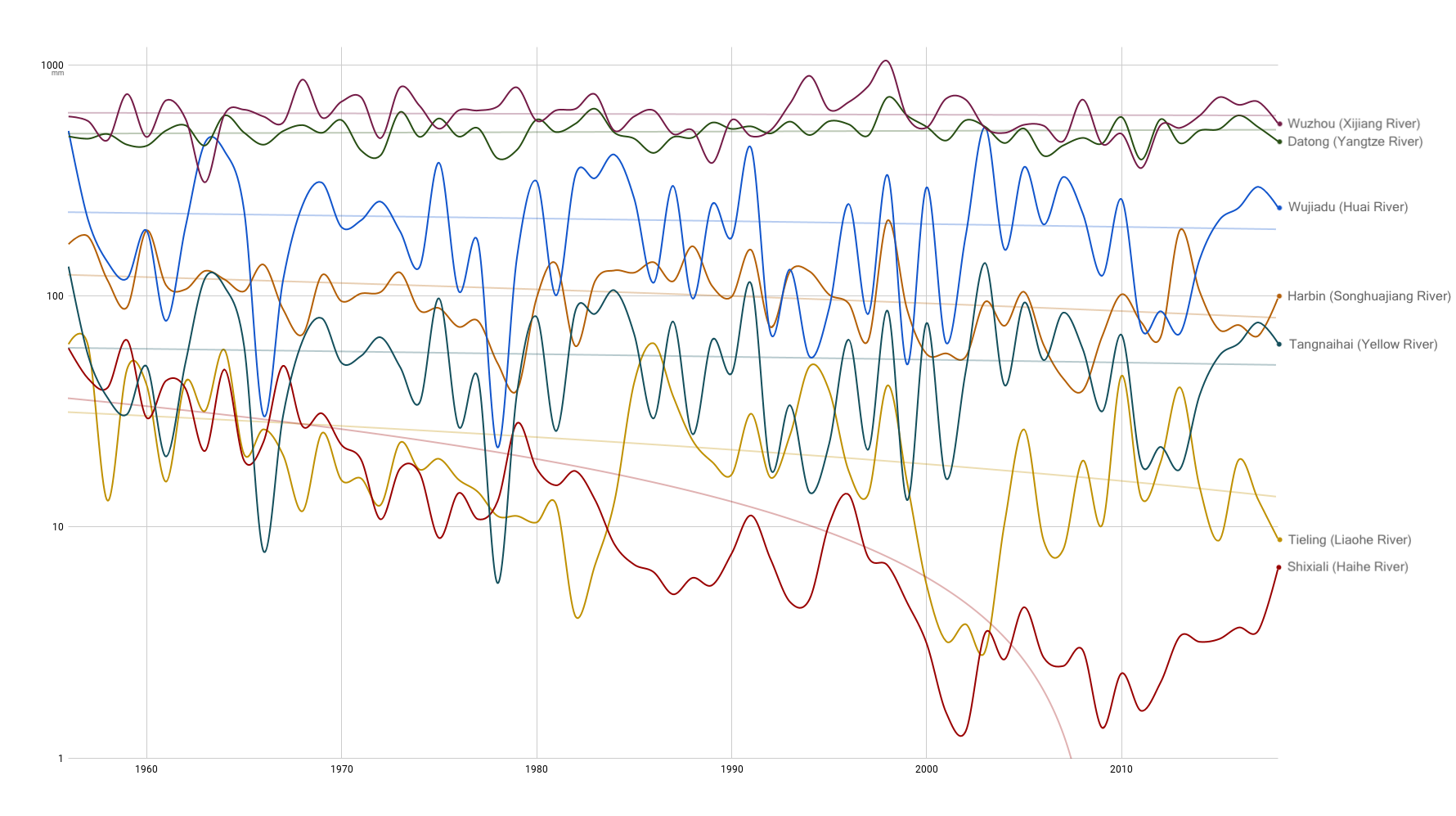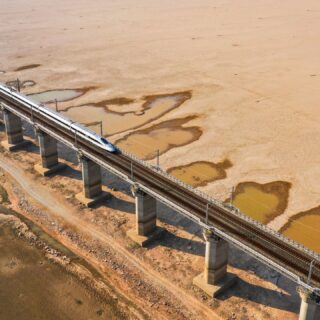Scientifically identifying the impacts from different drivers on river runoff is crucial to regional water management
Northern China Rivers Continue to Wither
Surface water is the easiest source of fresh water for human access, and therefore it plays a crucial role in the production and livelihood of human kind. River runoff is one of the primary forms of surface water.
Zhang et al (2020) studied the runoff records of Chinese rivers in the past 62 years (1956 to 2018). Their analysis shows that almost all major rivers of China are in a state of decline in terms of runoff. Rivers of Northern China (the Yellow and rivers to its north) are declining more significantly. The Yellow, the Haihe and the Liaohe, compared to their runoff in the 1980s, have witnessed a decline in runoff of more than a quarter. The Haihe River is leading the league by a decrease of more than 80%.

Under global warming, such changes might fit into the “dry places getting drier” paradigm (yet many scientists believe this paradigm over-simplifies the complexity of climate change impacts, for example, see Byrne et al. 2015, Feng et al. 2016), but river runoff decline in Norther China could be the result of the combination of multiple drivers. Apart from regional climate change, human interference impacts surface water significantly too. The authors therefore ague that “scientifically identifying the impacts from different drivers on river runoff is crucial to regional water management”.
Scientifically identifying the impacts from different drivers on river runoff is crucial to regional water management
Zhang et al 2020
Among the most developed three economic clusters of China, only the Bohai Bay rim, with Beijing, Tianjin and Hebei at its core, is located in semi-humid or semi-arid regions. The decline in surface water availability means this economically significant cluster is becoming more reliant on other sources of water, such as groundwater or cross-basin diversion. This would further exacerbate the conflict between different water uses such as for human consumption and environmental functions, which would pose an even greater challenge for China’s technical and institutional capacities in managing its water.
Full paper
- ZHANG Jianyun, WANG Guoqing, JIN Junliang, HE Ruimin, LIU Cuishan. Evolution and variation characteristics of the recorded runoff for the major rivers in China during 1956—2018. Advances in Water Science, 2020, 31(2): 153-161. http://journal16.magtechjournal.com/Jweb_skxjz/CN/Y2020/V31/I2/153 [in Chinese with English abstract]




